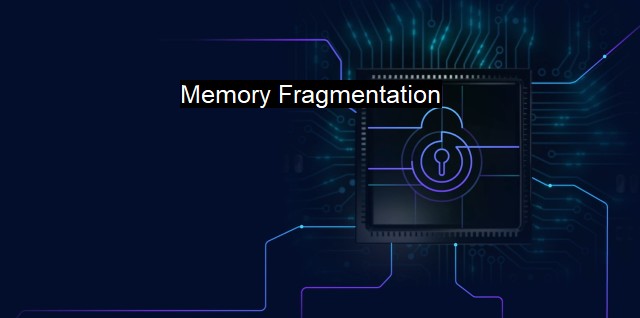What is Memory Fragmentation?
Understanding and Mitigating Memory Fragmentation: Implications for Cybersecurity and Antivirus Performance
Memory fragmentation is a crucial element to understand in the context of cybersecurity and antiviruses. This concept pertains to the computer's primary memory organization and its inner workings. Despite its significance, memory fragmentation remains comprehensively understudied and can serve as a lucrative niche for cyber attackers if not given due attention.At its essence, memory fragmentation is a phenomenon where addressing space in a computer's primary memory is broken up into discrete areas, non-contiguous free spaces or 'fragments'. This scenario typically results from the continuous allocation and deallocation of memory blocks over time.
As the system continues processing diverse requests and tasks, chunks of memory get assigned, used, then freed again. Over time, this cycle wins the memory layout a fragmented outlook – unorganized and scattered. Here, while the sum of unused chunks of memory may suffice to cater to a process's demands, the fragmentation extent denies the memory its consequential and accessible form. This complexion ultimately culminates in unoptimized processing, compromised system performance, and, in worst-case scenarios, the incapability to accommodate new requests.
Enlightening this aspect more coherently, think of fragmentation as disorderly spaces in a well-organized library. Over continuous book allocations and removals, you might end up with unattended books scattered everywhere. Assigning a new book might become nearly impossible despite having ample space to house it. Memory fragmentation works similarly in a computational environment.
Now, bringing the discussion into the light of cybersecurity, memory fragmentation and its lax management often serve as potential enablers for certain types of cyberattacks. Given that memory distribution is unorganized, cybercriminals can exploit this vulnerability to access and corrupt the system's memory and release malware.
One attack wherein memory fragmentation plays a critical role is the 'Heap Spraying' attack. Here, attackers exploit the fragmentation to ‘spray’ malicious code into heap memory – the memory portion computers reserve for dynamic memory allocation. By dumping immense amounts of data into the heap, they ensure that a substantial part of the system's memory contains the malicious code. This method significantly increases the chances of success for their attempted memory-related cyberattacks.
Similarly, memory fragmentation can be used in advanced persistent threats (APTs), wherein a network is intruded and breached for extended periods without detection. Memory fragmentation can ultimately assist attackers in concealing their malicious activities while allowing them to exploit hidden malware’s potential to control the infected network fully.
Antivirus systems have, thereby, a significant role to play in overseeing memory allocation and detecting indications of fragmentation that hint towards threat potential. They can accomplish this utilizing several advanced techniques, such as virtual machine-based execution, static code analysis, and heuristic- and behavior-based detection mechanisms. By continuously monitoring every byte of memory and facilitating proper defragmentation procedures, antiviruses can mitigate and pre-empt potential threats that capitalize on memory fragmentation.
In contrast, defragmentation, the rectification process for fragmentation, emerges as the savior here. System defragmentation performs tasks, moving files stored on a disk closer together to create larger regions of free space. This process mitigates the risks associated with fragmentation, thereby enhancing efficiency.
Succinctly, the roles of memory fragmentation and the combat methods, emerge as essential discussion points in any prospective discourse on network security. This unmentionable importance hence pushes us to boost understanding and develop advanced detecting and preventive measures progressively.

Memory Fragmentation FAQs
What is memory fragmentation and how does it relate to cybersecurity and antivirus?
Memory fragmentation is a phenomenon that occurs when memory is allocated and released in a way that creates small gaps between memory blocks. This can lead to inefficient use of memory and slower performance. In cybersecurity and antivirus, memory fragmentation can be a problem when malicious code attempts to exploit these gaps to gain access to sensitive information or execute unauthorized code.How can memory fragmentation affect the performance of my antivirus software?
Memory fragmentation can cause your antivirus software to slow down and become less effective. This is because the software relies on memory to scan files and detect malware. If the memory is fragmented, the software may have to work harder to access the necessary data, leading to slower scans and longer response times.What can I do to prevent memory fragmentation on my computer?
To prevent memory fragmentation, you can take several steps. First, avoid running too many programs at once, as this can lead to the creation of multiple small memory gaps. You can also try to minimize file fragmentation by regularly defragmenting your hard drive. Finally, make sure to keep your computer up-to-date with the latest operating system and security patches, as these often include fixes for memory-related issues.How can antivirus software address memory fragmentation?
Antivirus software can help address memory fragmentation by using specialized algorithms to more efficiently manage memory allocation and release. Some antivirus programs also use techniques like memory compression and optimization to reduce fragmentation and speed up scans. Additionally, many modern antivirus programs are designed to work seamlessly with the latest operating systems and hardware, which can help minimize the impact of memory fragmentation on overall performance.| | A | | | B | | | C | | | D | | | E | | | F | | | G | | | H | | | I | | | J | | | K | | | L | | | M | |
| | N | | | O | | | P | | | Q | | | R | | | S | | | T | | | U | | | V | | | W | | | X | | | Y | | | Z | |
| | 1 | | | 2 | | | 3 | | | 4 | | | 7 | | | 8 | | |||||||